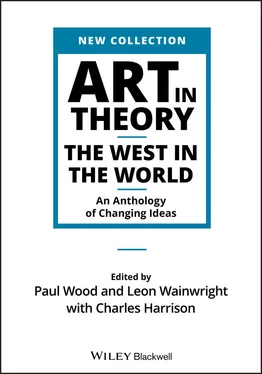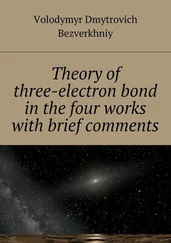The usual method of distributing Gardens in China, is to contrive a great variety of scenes, to be seen from certain points of view; at which are placed seats or buildings, adapted to the different purposes of mental or sensual enjoyments. The perfection of their Gardens consists in the number and diversity of these scenes; and in the artful combination of their parts, which they endeavour to dispose in such a manner as not only separately to appear to the best advantage, but also to unite in forming an elegant and striking whole.
* * *
In their large Gardens they contrive different scenes for different times of day, disposing at the points of view buildings, which from their use point out the proper hour for enjoying the view in its perfections: and in their small ones, where, as has been observed, one arrangement produces many representations, they make use of the same artifice. They have beside, scenes for every season of the year: some for winter, generally exposed to the southern sun, and composed of pines, firs, cedars, evergreen oaks, phillyreas, hollies, yews, junipers, and many other evergreens; being enriched with laurels of various sorts, laurestinus, arbutus, and such other plants and vegetables as grow or flourish in cold weather: and to give variety and gaiety to these gloomy productions, they plant amongst them, in regular forms, divided by walks, all the rare shrubs, flowers and trees of the torrid zone; which they cover, during the winter, with frames of glass, disposed in the forms of temples, or other elegant buildings. These they call conservatories: they are warmed by subterraneous fires, and afford a comfortable and agreeable retreat, when the weather is too cold to walk in the open air. […]
Their scenes of spring likewise abound with evergreens, intermixed with lilacks of all sorts, laburnums, limes, larixes, double blossomed thorn, almond and peach‐trees; with sweet‐bryar, early roses, and honey‐suckles. The ground, and verges of the thickets and shrubberies, are adorned with wild hyacinths, wall‐flowers, daffodils, violets, primroses, polianthes’s, crocus’s, daisies, snow‐drops, and various species of the iris; with such other flowers as appear in the months of March and April. […]
Their summer scenes compose the richest and most studied parts of their Gardens. They abound with lakes, rivers, and water‐works of every contrivance … The woods consist of oak, beech, Indian chestnut, elm, ash, plane, u‐ton‐shu and common sycamore, maple, abele and several other species of poplar; with many other trees, peculiar to China. The thickets are composed of every fair deciduous plant that grows in that climate, and every flower or shrub that flourishes during the summer months; all uniting to form the finest verdure, the most brilliant, harmonious colouring imaginable. The buildings are spacious, splendid and numerous, every scene being marked by one or more; some of them contrived for banquets, balls, concerts, learned disputes, plays … In the center of these summer plantations, there is generally a large tract of ground set aside for more secret and voluptuous enjoyments; which is laid out in great number of close walks, colonades and passages, turned with many intricate windings, so as to confuse and lead the passenger astray. […]
No nation ever equalled the Chinese in the splendor and number of their Garden structures. We are told by Father Attiret that, in one of the Imperial Gardens near Pekin, called Yuen Ming Yuen, there are, besides the palace which is itself a city, four hundred pavilions; all so different in their architecture, that each seems the production of a different country. […]
The plantations of their autumnal scenes consist of many sorts of oak, beech, and other deciduous trees that are retentive of the leaf, and afford in their decline a rich variegated colouring; with which they blend some ever‐greens, some fruit‐trees, and the few shrubs and flowers which blossom late in the year; placing amongst them decayed trees, pollards, and dead stumps of picturesque forms, overspread with moss and ivy.
The buildings with which these scenes are decorated, are generally such as indicate decay, being intended as mementos to the passenger. Some are hermitages and alms‐houses, where faithful old servants of the family spend the remains of life in peace, amidst the tombs of their predecessors, who lie buried around them: others are ruins of castles, palaces, temples, and deserted religious houses; or half‐buried triumphal arches and mausoleums with mutilated inscriptions, that once commemorated the heroes of antient times: or they are sepulchres of their ancestors, catacombs and cemeteries for their favourite domestic animals; or whatever else may serve to indicate the debility, the disappointments, and the dissolution of humanity: which, by co‐operating with the dreary aspect of autumnal nature, and the inclement temperature of the air, fill the mind with melancholy, and incline it to serious reflections.
* * *
The dispositions and different artifices mentioned in the preceding pages, are those which are chiefly practised in China, and such as best characterize their style of Gardening. But the Artists of that country are so inventive, and so various in their combinations, that no two of their compositions are ever alike. […] The reader is therefore not to imagine that what has been related is all that exists; on the contrary, a considerable number of other examples might have been produced: but those that have been offered, will probably be sufficient; more especially as most of them are like certain compositions in musick, which, though simple in themselves, suggest, to a fertile imagination, an endless succession of complicated variations.
To the generality of Europeans, many of the foregoing descriptions may seem improbable and the execution of what has been described, in some measure impracticable: but those who are better acquainted with the East, know that nothing is too great for Eastern magnificence to attempt; and there can be few impossibilities, where treasures are inexhaustible, where power is unlimited, and where munificence has no bounds. European artists must not always hope to rival Oriental grandeur.
IIA9 Sir William Jones (1746–94) from his Discourses to the Asiatick Society of Bengal
William Jones showed an early proficiency in the study of languages, both ancient and Oriental. By his mid‐twenties he had gained a reputation as an Oriental scholar with several noted translations to his name and had been elected to the Royal Society. For financial reasons, in the 1770s he turned to the study of law, where he also achieved prominence. A republican sympathizer and supporter of the American revolution, he was at one time thought to be about to go to America to help draft the Constitution. In the event, however, he was appointed to the Supreme Court of Bengal, and he arrived in Calcutta in 1783. Among his achievements there were the founding of the Asiatick Society of Bengal in 1784 and of its journal, Asiatick Researches . The present extracts are reprinted from his first two annual Discourses to the society. The first, from 1784, titled ‘A Discourse on the Institution of a Society for Inquiring into the History, Civil and Natural, The Antiquities, Arts, Sciences and Literature of Asia’ gives some sense of the scope of Jones’s project. The ‘Second Anniversary Discourse’, delivered on 24 February 1785, is interesting for its assessment of the relations between European and Asiatic science and culture. At one level, with its clear assertion of the primacy of Greek‐based European civilization and Jones’s statement of the purpose of the society’s investigations being to go beyond ‘mere curiosity’ and aim instead at ‘our own improvement and advantage’, this may seem to conform to later criticisms of Enlightenment knowledge‐projects as being a mere cloak for imperialist expansion. But it must be remembered also that Jones is speaking both culturally, from a position of advocacy of the value of Asian civilization on a world scale, and judicially, from a principled commitment to the equality of Indians before the law. The late eighteenth‐century situation of the British presence in India exhibited connections with – but also marked differences from – the exclusionary norms of fully fledged nineteenth‐century imperialism. Our extracts are from The Works of Sir William Jones in 13 volumes, by Lord Teignmouth, vol. 3, London, 1807, pp. 1–6, 12–13 and 16–19.
Читать дальше












